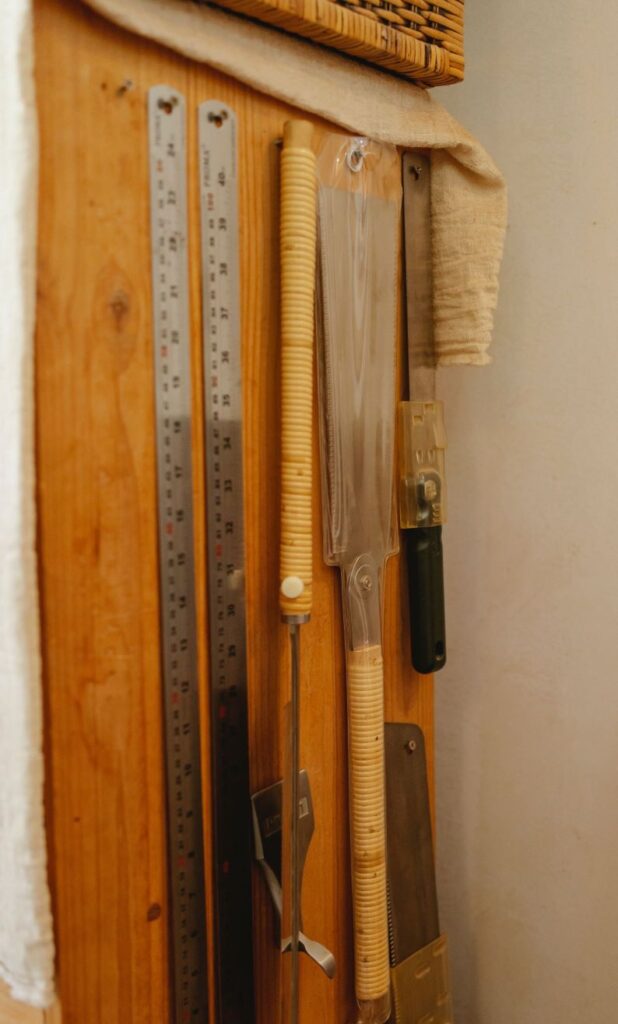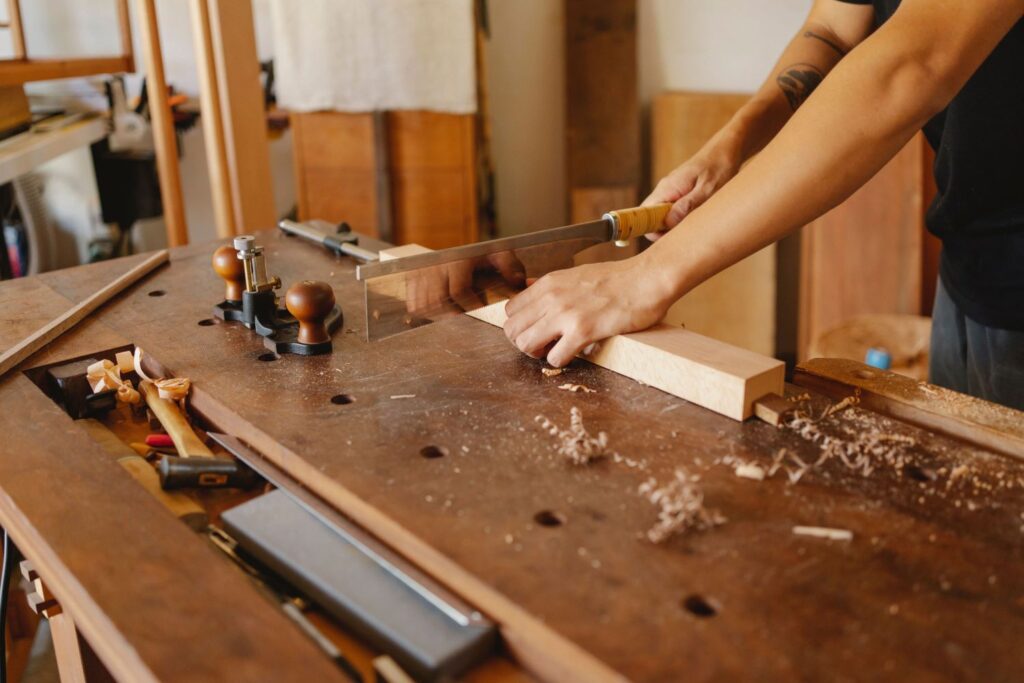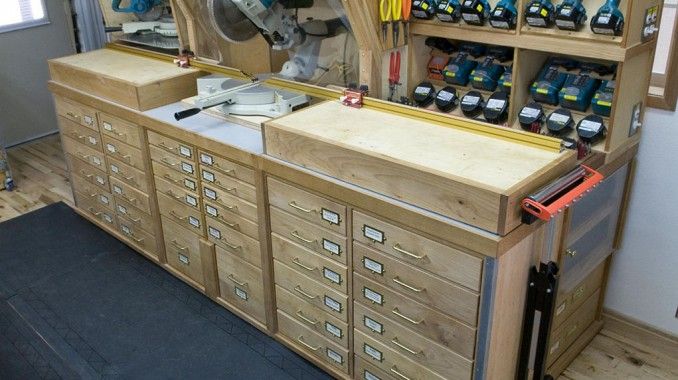When working in a small wood shop, optimizing space is essential to make the most of your limited area. Efficient tool placement, smart storage solutions, and creating versatile workstations can help you maximize the use of available space while maintaining functionality and productivity. In this article, we will provide you with tips and strategies to help you optimize space in your small wood shop and create an organized and efficient work environment.

1. Strategies for Space Optimization in Small Wood Shops
In the world of woodworking, small spaces can pose unique challenges. Whether you’re a hobbyist or a seasoned craftsman, optimizing the limited area of a small wood shop is crucial for efficient and productive work. To unlock the full potential of your workspace, strategic tool placement, smart storage solutions, and versatile workstations are essential. In this article, we will share expert tips and proven strategies to help you maximize the use of available space in your small wood shop while maintaining functionality and promoting a well-organized work environment. From efficient tool placement to clever storage solutions and adaptable workstations, we’ve got you covered with practical advice that will empower you to create an optimized and productive wood shop.
Quick Tips:
Here is a bulleted list of strategies for space optimization in a small wood shop:
- Prioritize frequently used tools for easy access and reduced movement.
- Utilize vertical storage options such as wall-mounted tool racks, pegboards, and shelving.
- Incorporate multi-purpose tools or compact versions to save space without compromising functionality.
- Design custom storage units, such as cabinets and drawers, tailored to your specific needs.
- Utilize mobile storage solutions like rolling tool carts and portable containers to maximize flexibility.
- Create modular workbenches with interchangeable components to adapt to different project requirements.
- Explore multi-functional furniture options, such as storage cabinets that can also serve as work surfaces.
- Implement efficient workflow planning to minimize unnecessary movement and optimize space usage.
- Consider utilizing overhead storage racks or pulley systems to take advantage of underutilized vertical space.
- Utilize space-saving techniques like incorporating foldable or retractable work surfaces and support tables.
By implementing these space optimization strategies, you can make the most of your small wood shop and create an organized and efficient workspace.
2. How to Evaluate and Plan Your Space
Before diving into rearranging your wood shop, take the time to evaluate your current space and plan accordingly. Assess the available area and consider the workflow and traffic patterns within the shop. By understanding your space constraints and the unique requirements of your woodworking projects, you can develop an effective layout that maximizes every inch.
Here are four online tools that can assist you with planning and setting up your wood shop:
A. SketchUp:
SketchUp is a popular 3D modeling software that allows you to create detailed layouts and visualize your wood shop design. You can draw floor plans, add dimensions, and arrange virtual models of tools and equipment. SketchUp offers both free and paid versions, making it accessible for woodworkers of all levels.
B. RoomSketcher:
RoomSketcher is an online floor plan and home design tool that can be useful for planning your wood shop layout. It offers an intuitive interface with drag-and-drop functionality, allowing you to create accurate floor plans and experiment with different arrangements. RoomSketcher provides a free version, as well as premium options for more advanced features.
C. Woodshop Widget:
Woodshop Widget is an online tool specifically designed for planning wood shops. It allows you to customize the dimensions of your space and drag and drop tools and equipment onto the virtual floor plan. You can also add walls, doors, and windows to accurately represent your workshop. Woodshop Widget offers a free version with limited features, as well as a paid version with additional capabilities.
D. SmartDraw:
SmartDraw is a versatile diagramming tool that can be used for wood shop planning. It offers a wide range of templates and symbols, making it easy to create professional-looking floor plans and layouts. SmartDraw also integrates with other software, such as CAD programs, making it a flexible tool for woodworkers. It is available as a subscription-based service.
These online tools can be valuable resources for visualizing and planning your wood shop layout, helping you optimize space and make informed decisions about tool placement and storage solutions.
3. Efficient Tool Placement

Strategic tool placement can significantly impact your workflow in a small wood shop. By organizing tools based on their frequency of use and accessibility, you can reduce unnecessary movement and save valuable space.
A. Prioritizing Frequently Used Tools
Start by identifying the tools you use most frequently. These tools should be easily accessible and within arm’s reach. Consider installing wall-mounted tool racks and pegboards to keep your frequently used tools within sight and close proximity. This not only saves space but also improves efficiency when grabbing the necessary tools for a specific task.
B. Utilizing Multi-purpose Tools
Another way to optimize space is by investing in multi-purpose tools. Combination machines that combine multiple functions into one unit are ideal for small wood shops. They can perform tasks such as sawing, planing, and jointing, eliminating the need for separate machines and saving valuable floor space. Additionally, explore compact versions of common woodworking tools, as they are designed specifically to fit in smaller spaces without compromising functionality.
4. Smart Storage Solutions
In a small wood shop, efficient storage solutions are crucial for maintaining an organized and clutter-free environment. By utilizing vertical storage options, custom storage units, and mobile solutions, you can maximize your available space.
A. Vertical Storage Options
Vertical storage is a game-changer when it comes to optimizing space in a small wood shop. Utilize your wall space effectively by installing shelves and hanging storage solutions. Wall-mounted cabinets, tool racks, and open shelving can provide a convenient and accessible way to store tools, supplies, and materials. Additionally, consider using overhead storage racks or pulley systems to make use of the often-underutilized space near the ceiling.
B. Custom Storage Units
Tailor-made storage solutions can help you maximize every square inch of your wood shop. Build custom cabinets and drawers that fit your specific needs and make the most efficient use of available space. Consider adjustable shelving systems that can be adapted to accommodate various sizes of tools and materials. By customizing your storage units, you can eliminate wasted space and create a more organized and visually appealing workshop.
C. Mobile Storage Solutions
Mobility is key in a small wood shop, and utilizing portable storage options can enhance flexibility and organization. Invest in rolling tool carts or workbenches that can be easily moved around the shop as needed. This allows you to bring tools and supplies closer to your working area and minimizes the need for excessive walking. Additionally, using tool chests and portable storage containers can provide a compact and efficient way to store smaller tools and accessories.
5. Creating Versatile Workstations

Versatile workstations allow you to adapt your wood shop to different projects and optimize space usage. By incorporating modular workbenches and multi-functional furniture, you can maximize your workspace while maintaining functionality.
A. Modular Workbenches
Design your workbenches with interchangeable components that can be adjusted and rearranged to accommodate different tasks. Consider incorporating flip-top or foldable work surfaces that can be easily stowed away when not in use. This allows you to free up valuable space in your small wood shop while still having a sturdy and functional workstation whenever you need it.
B. Multi-functional Furniture
Investing in multi-functional furniture can help you maximize space and create a more versatile work environment. Use storage cabinets or tool chests as work surfaces to make the most of every square inch. Additionally, consider incorporating retractable or foldable support tables that can be extended when needed and folded away when not in use. By utilizing furniture that serves multiple purposes, you can optimize space without sacrificing functionality.
6. Maximizing Space in Your Small Wood Shop
Optimizing space in a small wood shop shouldn’t be seen as a limitation but rather as an opportunity for creativity and efficiency. Embrace the challenge of working with limited space and approach it with a positive mindset. By thinking outside the box and exploring innovative solutions, you can create a productive and enjoyable woodworking environment, even in the smallest of spaces.
FAQ
Q1: Can I still have a fully functional wood shop in a small space?
A1: Absolutely! By implementing smart strategies like efficient tool placement, utilizing vertical storage, and creating versatile workstations, you can have a fully functional wood shop in even the smallest of spaces.
Q2: How can I make the most of limited wall space for storage?
A2: Consider using wall-mounted tool racks, pegboards, and shelves to maximize wall space. Additionally, you can install overhead storage racks or pulley systems to utilize the space near the ceiling.
Q3: Are compact tools as effective as their larger counterparts?
A3: Yes, compact tools are specifically designed to provide the same functionality as their larger counterparts while occupying less space. They are a great option for small wood shops.
Conclusion
In conclusion, optimizing space in your small wood shop is not only achievable but can also be an enjoyable and rewarding process. By evaluating your space, efficiently placing tools, implementing smart storage solutions, and creating versatile workstations, you can maximize the use of your available space while maintaining functionality and productivity. Embrace the challenge of working in a small space, and with a positive outlook, you can create a well-organized and efficient wood shop that inspires creativity and craftsmanship.

